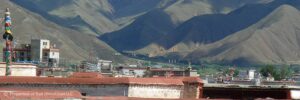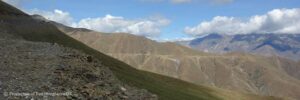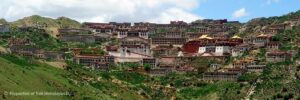
Tibet Everest Base Camp Trek
Trip Duration:
19 DaysTrip Code:
TEBTrip Grade:
Moderate to StrenuousNo. of Pax:
2 - 16From
$ 4760/person
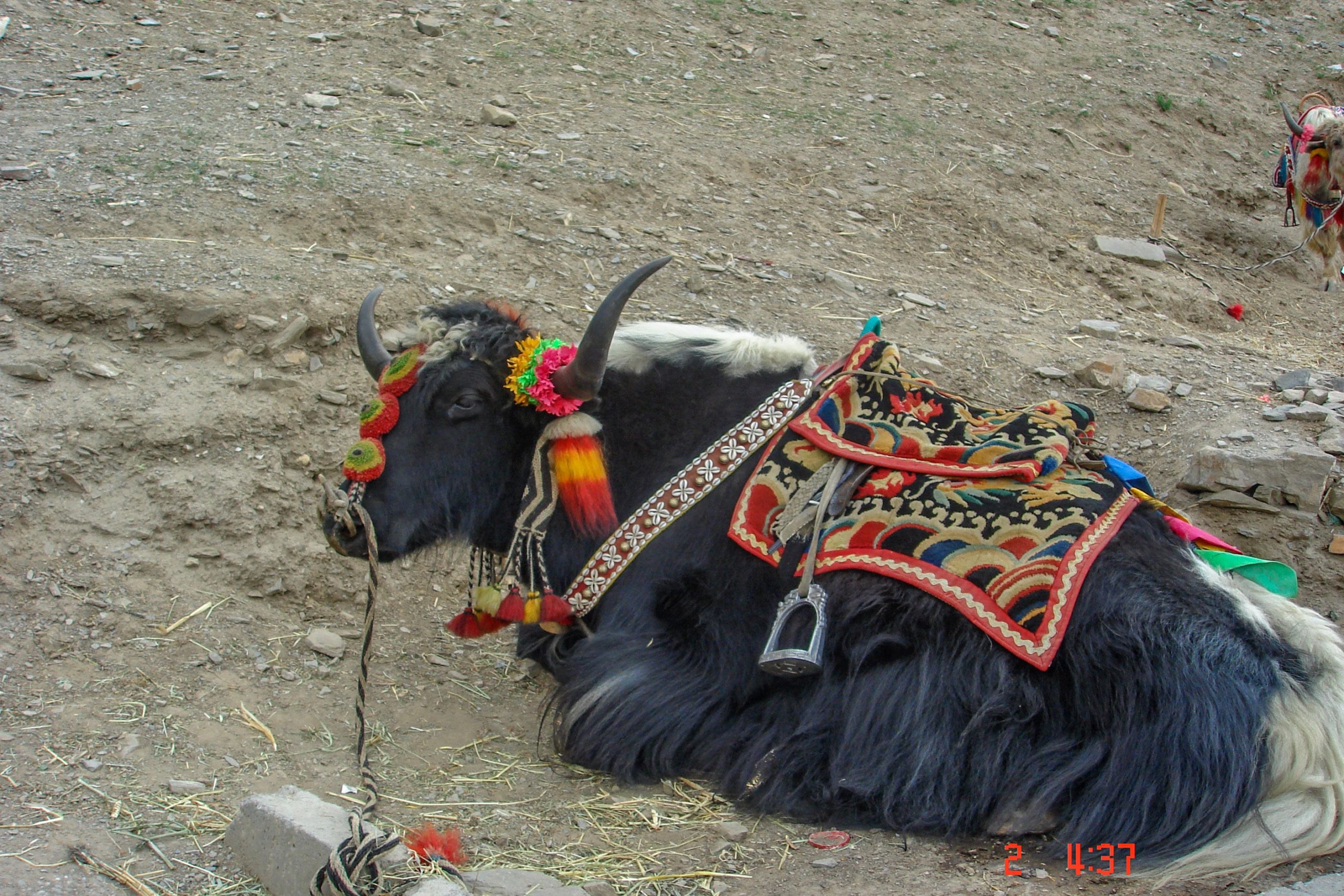
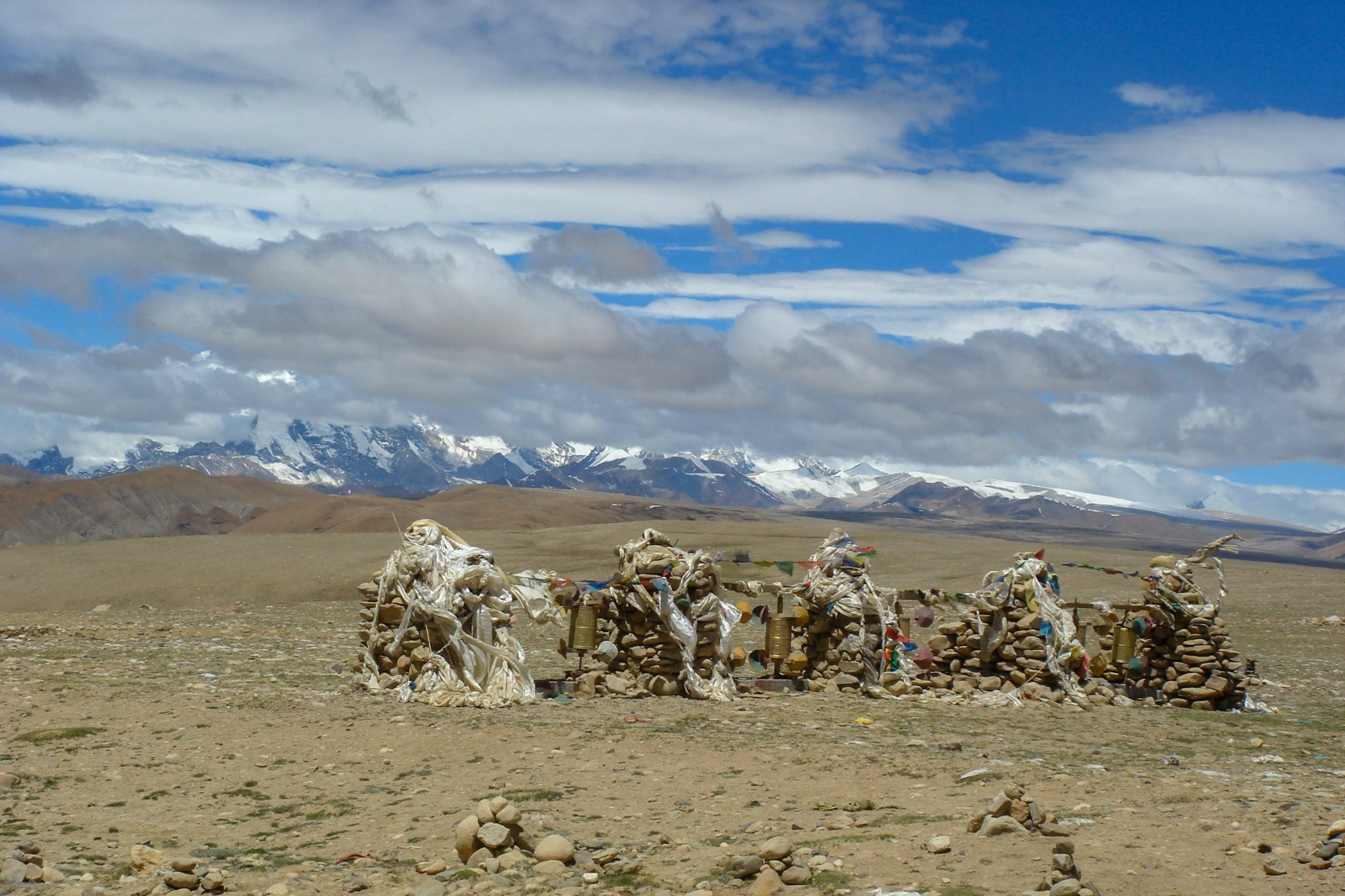
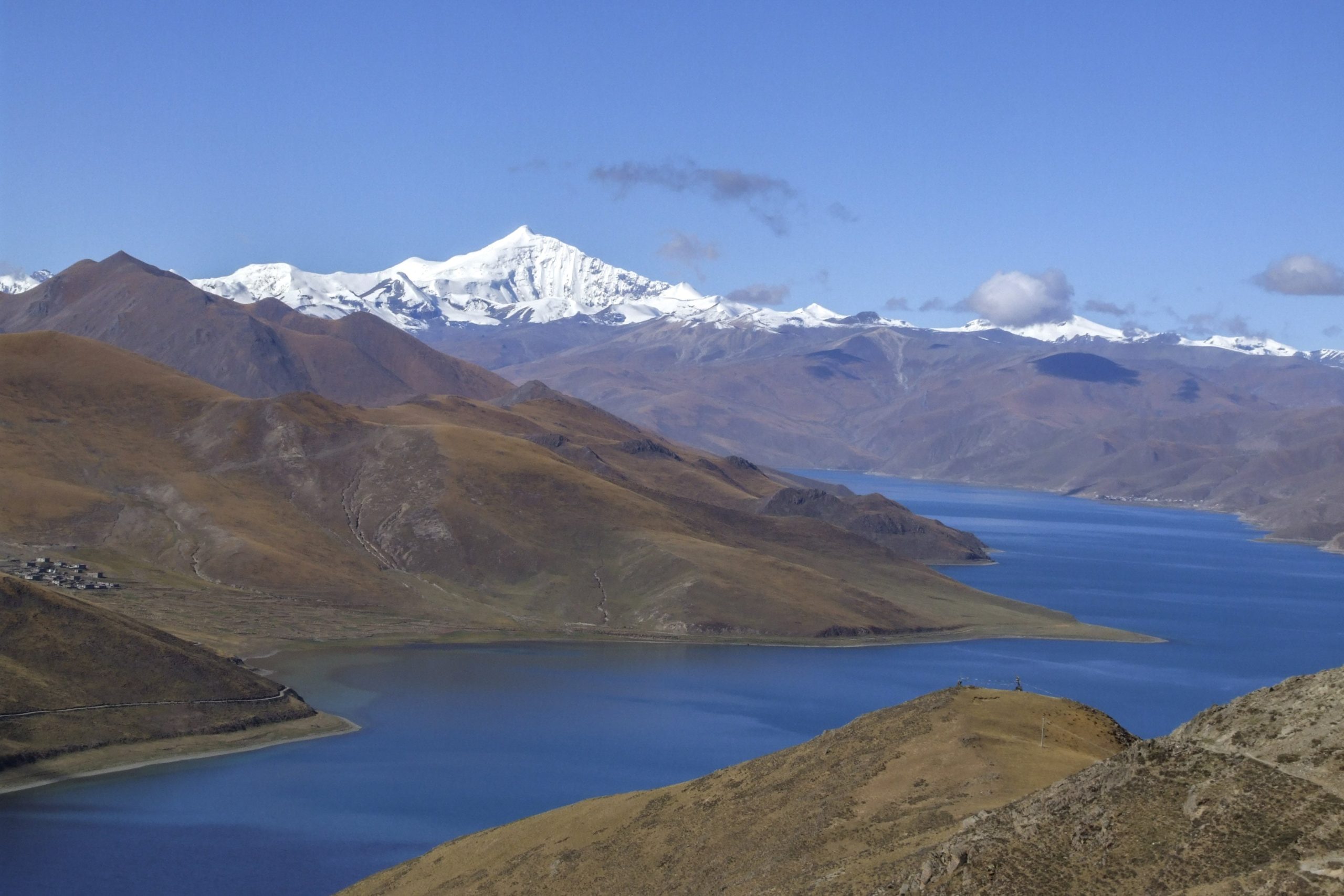
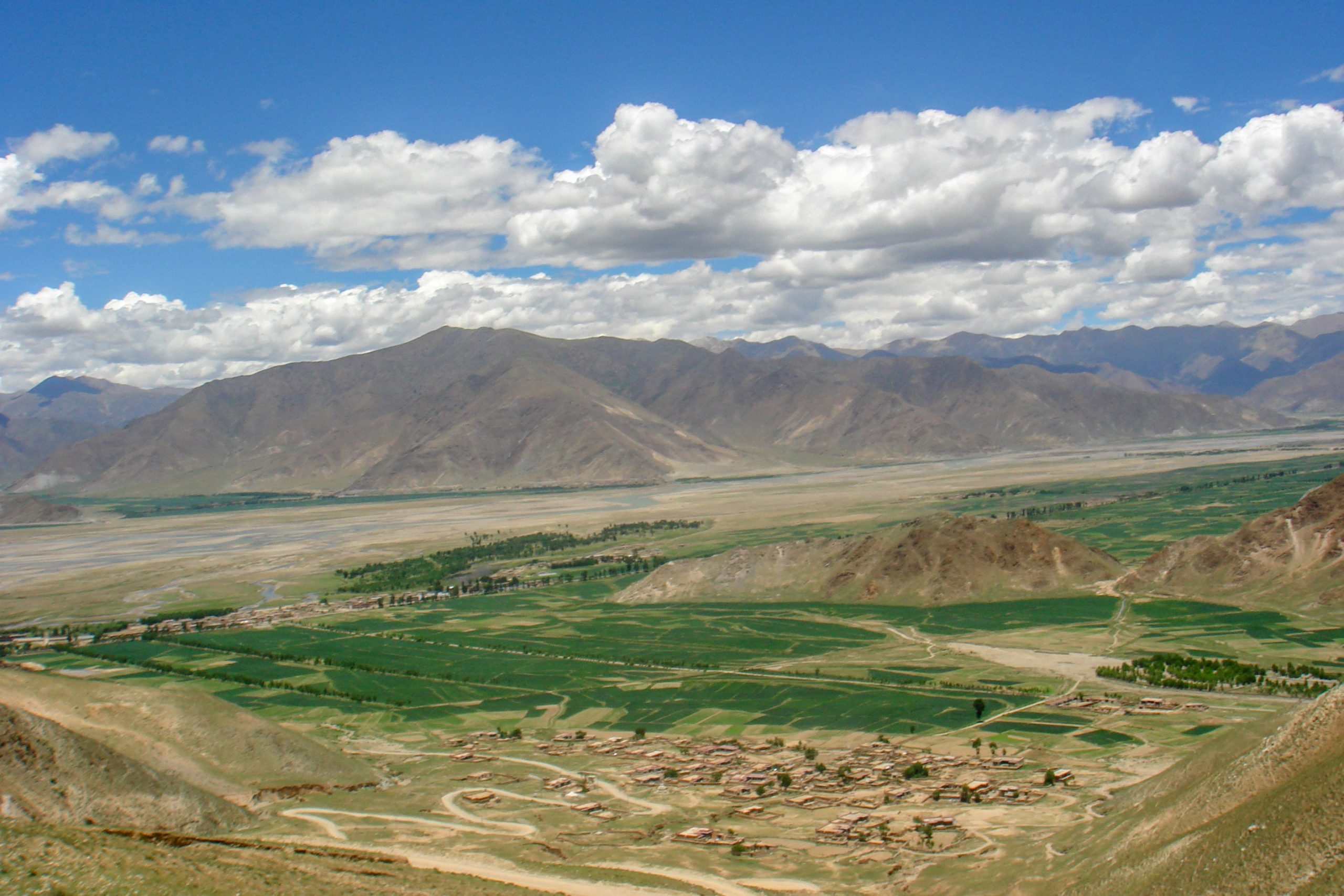
Overview
Tibet Everest Base Camp is one of the popular treks in Tibet and most of the time the trail passes through a plateau over 4300m and crosses over one pass called Nam-la 5300m. So, this trekking route is really difficult one on a high altitude. However, because of the high-altitude, it offers splendid views of the north face of Everest and other snowy mountain peaks around. Tibet Everest base camp trek would be a lifetime for those who want to experience the Tibetan amazing culture, rolling hills, ancient forts, artistic ornate monasteries, centuries old caravan routes, breathtaking scenery and much more. Everest Base Camp trek can be done from April to late October.
Trekking in Everest Base Camp involves two days of sightseeing in Lhasa followed by a long drive across the ancient towns of Gyantse and Shigatse en route. The trekking trail begins from the plains of Tingri and swings southward following the Ra-Chu Valley, a region which is used by herders for grazing and their livestock.
After Nepal’s 2015 devastating earthquake the overland Tibet-Nepal border has remained closed at this time. So, the only option to do Everest Base Camp trek is to begin the journey with the flight from Kathmandu to Lhasa and return to Kathmandu from Lhasa. In Lhasa we spend 3 nights, staying right in the center of the old city. It will allow us plenty of time for acclimatization and easy access to the city’s main attractions – the Potala Palace and Jokhang Temple. In Lhasa, we will visit the famous Potala palace, residence of the Dalai Lama, Norbulingka, the great Drepung Monastery and the holy Jokhang Temple. Then we walk around the Tibetan market – the bustling Barkhor Bazaar.
Leaving Lhasa we will drive passing through the beautiful Turquoise lake on the way to the historic town of Gyantse with its unique multi-storied Kumbum Stupa. From Gyantse, we make a scenic drive to Shigatse (1.5hrs) through the typical Tibetan countryside. At Shigatse, we walk past the massive Tashilungpo monastery and visit the memorial ‘Chorten’ of the late Panchen Lama. Then we further make a scenic drive to Rongbuk via Xegar. From Rongbuk, we hike up to Everest BC and explore around and back to Rongbuk. The Same day we drive to Shigatse and next day we take a flight back from Lhasa to Kathmandu.
Itinerary:
This itinerary is a guideline pattern which we offer for Tour & Trek of this type. But, unforeseen events such as mountain weather, local politics, transportation etc, is beyond Trek Himalayan’s control could be resulted in a change of program. It is very unlikely to have such circumstances occurs but our effort is to minimize its effect, however Trek Himalayan is not responsible for the result of delays or changes in our tour itinerary..
Arrive at the (TIA) Tribhuwan International Airport where you will be welcomed by Trek Himalayan representative and transferred to your hotel. The rest of the afternoon is free until evening when you’ll enjoy a welcome drinks with your guide and introduce each other. Overnight in Kathmandu
Today our representative will work on Tibet visa, re-confirming the flight tickets for Lhasa-Kathmandu-Lhasa and other logistics. Your guide will meet you at your hotel in the morning to begin your sightseeing tour of Kathmandu. You will visit the Boudhanath temple, the largest Buddhist stupa in Nepal, Pashupatinath, a Hindu pilgrimage site, and possibly view cremation ceremonies along the banks of the Bagmati River. Continue drive to Swayambhunath, the monkey temple. Overnight in hotel
Trek Himalayan airport representative transfers you to the Tribhuvan International airport for the flight to Lhasa on Air China. This trans- Himalayan flight will give you an opportunity to have an aerial view of Mt. Everest and other Himalayan Peaks (if weather permits). Upon arrival at Gonggar airport immigration and customs formalities need to be completed. Then, you will be received by a Tibetan guide and escorted to Lhasa city in two hours’ drive covering the 93 km. Upon arrival we check in at the pre-booked hotel, right in the heart of the old city.
Today you will start much-awaited sightseeing tour in Lhasa. Accompanying on your tour there will be a Tibetan/Chinese guide and interpreter. Firstly you will visit the Sera Monastery; approximately 5km north of central Lhasa. It used to be one of Lhasa’s two great Gelugpa monasteries second only to Drepung. The monastery is interesting to visit particularly in the morning when the monastery is at its most active. The whitewashed walls and golden roofs along with several hundred monks, all make a fascinating visit. We will find time to have lunch in between the tour and continue our sightseeing. Next attraction will be the Norbulingka Palace; the summer palace of the Dalai Lama. The park of the palace is a most interesting to visit during festivals.
Jokhang Temple is next in our touring list. It is the most revered religious site in Tibet. Thick with the smell of yak butter, echoing with the murmur of mantras and bustling with awed pilgrims, the Jokhang would be an unrivalled Tibetan experience to travelers
Potala Palace
It is one of the great wonders of world architecture. The first sight of the fortress-like structure will be a magical moment that you will remember for a long time. It’s hard to peel eyes away from the palace. The Potala is a structure of massive proportions, an awe-inspiring place to visit. This used to be the palace of the Dalai Lama since 5th or 6th century. The present palace, however, was constructed in the 17th century.Drepung Monastery
It will be your another fascinating place. It was founded in the 14th century and once used to be the largest monastery in the world where a population of over 10,000 monks used to live. In the recent times, the number is reduced to some hundreds. The place is still very interesting as it still preserves the originality. The remaining time will be free to explore Lhasa on your own. Overnight in hotelAfter breakfast, we drive from Lhasa to Shigatse crossing over the Gampa La pass (4790 m). From the Pass, you will have a glimpse of Yamdrok-tso (4400m) .The Lake is surrounded by many snow-capped mountains and in the distance you can have spectacular views of Holy Mount Nyenchen Khangsar, (7191m) the highest mountain near Lhasa.
Later, we will pass and enjoy the Korola Glacier on the roadside. At Manak Dam Lake, you can hang pray flag at Simila Mountain Pass; Then, we will arrive in Gyantse, historically Tibet’s third largest city (after Lhasa and Shigatse).In Gyantse, we will visit the famous Pelkor Monastery and Gyantse Kumbum and enjoy the distant view of Gyangtse Fortress.
After one and a half drive, we arrive in Shigatse, which is the second largest city in Tibet. In Shigatse, you may visit traditional Barley Mill and view the landscape of Barley Field (in summer). Stay overnight in Shigatse
Today after breakfast we will drive about 310km to our trekking start point – Lao Tingri. We
We cross several high passes including the Lalung La [5,050m], which offers the most breathtaking panorama of the Himalayan range including Mt Everest. We will pass through the wind-swept Qinghai-Tibet Plateau. You will be fascinated by the imposing mountain roads and rugged terrain crossing several high passes including the Lalung La (5,050m) This mountain pass offers the most breathtaking panorama of the Himalayan range including Mt Everest. We’ll hire yaks, yakman or porters at LaoTingri and continue our drive farther to the Langkor monastery from LaoTingri . On the way we will visit the Gompa built in the Padampa Sange’s meditation cave and it became the seat of the Dampapa School of Tibetan Buddhism. Overnight at Guest House in Langkor.Today is our first day trekking that takes us to the Cho Oyu Base Camp. It is one of the most beautiful walks today as we will walk just in front of the Cho Oyu Snowy Mountains standing at 8188 m, which is the sixth tallest mountain in the world. This is one of the most famous snow-capped mountains in the world where mountaineers do expedition to the summit. Getting to the base camp of this marvelous mountain is one of the most memorable adventure camping. Here we will enjoy the beautiful sunset views of Mt.Cho Oyu and the Nangpa La Pass. Overnight at camp in Base Camp.
After having breakfast we start trekking from Cho Oyu base camp to the southeast of Lungjang valley and walk towards the upper part of the Lungjang village. While trekking we enjoy majestic views of Mt. Cho Oyu. On the way we may encounter some wild animals such as blue sheep, foxes and wolves. There is also a beautiful nomad camp at the foot of Lamna La where we can share life experience with Tibetan nomads who graze their flocks of sheep, yaks and other live stocks. It will be a hard day’s trekking with a lot of uphill climbs, but more rewarding to get the views of the Himalayas from close quarters. Overnight stay in camps at the base of the Lamna La Pass.
After breakfast we start our trek ascending a steep trail climbing towards the Lamna La Pass (5250m) while enjoying the astounding views of Mt. Cho Oyu, Lungjang valley and the Nangpa La Pass with other snow-capped mountains around. Around 3 hours of uphill walk will take us to the top of the Lamna La from where we will descend into a marshy side valley that leads us to Dzakarchu River. Since it is a steeply downhill walk, it will take around 2 hours to get to the Dzakarchu River. We will continue our trek in the Dzakarchu valley from where the first views of Mt. Everest starts to show up, eventually getting closer and closer in our eyes, bringing a sense of pride in being close to the world’s highest mountain without having any obstacles from high altitude. We then reach the Rongbuk monastery where we can rest in tented camps and enjoy the beautiful sunset views of Mt. Everest in the evening. Overnight in Rongbuk monastery
After breakfast we will head for the Dza Rongbuk monastery and the Rongbuk Everest Base Camp. Dza Rongbuk Gompa and its accompanying hermitage retreats were introduced to the world in the 1920s through the accounts of the first British mountaineering team.
Today we trek the last 8 km to Mount Everest Base Camp and enjoy the awesome view of Mt. Everest. The base camp itself is dry and barren, but the view of Everest is more than compensating with the sheer north face of the highest mountain in the world towering above us.. After spending some moment at BC, we’ll get on the jeep and drive to New Tingri (Shegar). Overnight stay at hotel in New Tingri
Leaving New Tingri (Shegar) we drive to Shigatse . On the route we will cross two high passes Tropu La ( 16,236 ft) and Gyatso La (17,122 ft). Check in hotel in Shigatse and take rest for a while. Later, you will visit the ruins of historic Shegar Dzong, once the capital of Tingri region. If time permits, visit Shegar Chode Monastery, which is a small Gelugpa institution. Back to the hotel and stay overnight.
Today, we will drive back to Lhasa on the friendship Highway. The whole distance is almost 280 km and it takes 6 hours along the Yarlung Tsangpo River / Bhamaputra River (the Longest and largest river in Tibet). Stay overnight in Lhasa
You will be transferred to Gonggar airport for your flight to Kathmandu, where you’ll be met by Trek Himalayan representative and got transfer to hotel
You are completely free today.
Trip Map:
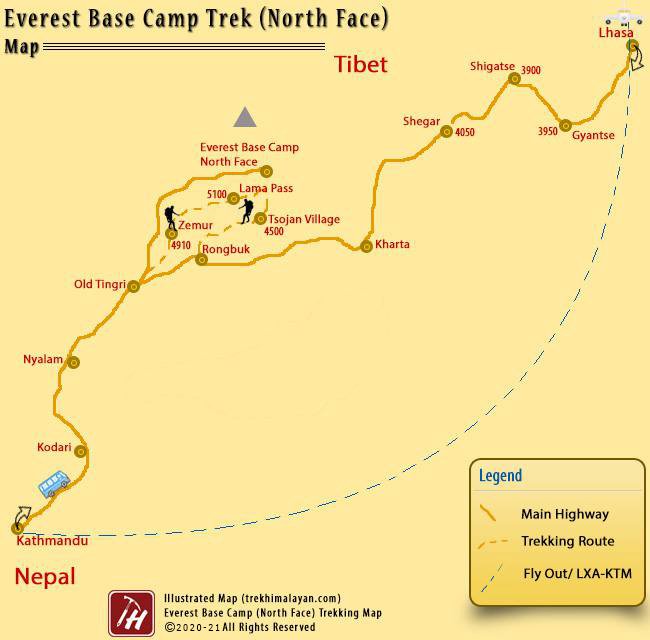
What is included
What is Excluded
Tibet Everest Base Camp Trek 2024/2025 Cost and Departure Dates
Trip Code
Arrival Date
Departure Date
Status
Price
Nitty Gritty
General Information
Nepal
Nepal is a small landlocked country of highly diverse and rich geography, culture, and religions. The mountainous north has eight of the world’s ten highest mountains, including Mount Everest. It contains over 240 peaks more than 20,000 ft (6,096 m) above sea level. The fertile and humid south is heavily urbanized. By some measures, it is a land of different arts and indigenous cultures well preserved since time immemorial. Hindu and Buddhist shrines found in the country are enriched with wood carving and bronzes, century’s old statues standing along the wayside and three popular historic cities – Kathmandu, Bhaktapur, Patan have preserved their medieval splendor and architectural flavor till date.Geography
Nepal is located in South Asia between China in the north and India in the south, east and west. While the total land area is 147,181 sq. km including water area of the country that is 3,830 sq. km. The geographical coordinates are 28°00′N 84°00′E. Nepal falls in the temperate zone north of the Tropic of Cancer. Nepal’s ecological zones run east to west about 800 km along its Himalayan axis, 150 to 250 km north to south, and are vertically intersected by the river systems. The country can be divided into three main geographical regions: Himalayan region, mid hill region and Terai region. The highest point in the country is Mt. Everest (8,848 m) while the lowest point is in the Terai plains of Kechana Kalan in Jhapa (60 m). (Source NTB)Nepal Visa
All visitors except the Indian nationals must hold passport and valid visa. Visa can be obtained at the Nepalese diplomatic missions and consulates abroad. Visa is also issued at the entry points. It can be extended at the Department of Immigration in Kathmandu. Children under 10 years need not pay any visa fee. People willing to get entry Visa at the airport or any of the land entry points are required to fill a visa form with passport photograph.
* Tourist visa can be extended for a maximum period of 150 days in a single visa year (January – December).Government Office Hours & Holidays
Sunday to Thursday: 1000hrs – 1700hrs (during summer)
Sunday to Thursday: 1000hrs – 1600hrs (during winter)
Friday: 1000hrs – 1500hrs.
Saturday: Holiday
You can find list of other national holidays in Nepal hereLanguage
Nepali, written in the Devanagari script, is the official language of Nepal. However, most people living in the city areas can understand and speak English fluently. Hindi language is widely understood across the country.Tibet Travel Information
Tourist Visa processing rules for Tibet through Nepal
Chinese Embassy in Kathmandu will require original passport for 3 full days for visa processing.
Visa application will be accepted only in weekdays (Monday to Friday). Embassy will not accept visa application during weekend Saturday and Sunday.
For example:
If a client gives our staff his passport on Monday before 11 am and he will get visa in the afternoon on Wednesday and later he can fly from Kathmandu, Nepal to Tibet.
Visa application must be submitted before 11am at the Embassy and visa will be issued in the afternoon of the third day.
Chinese Embassy will not accept any urgent group visa and will not accept without passport. You’ll need to apply with all complete documents.
Urgent Situation:
Semi urgent is – apply today before 1 pm and get visa on the day after tomorrow at 10 amDocument Required to Apply for Tibet Permit and Visa in Nepal
Valid Passport and its Scanned Copy:
Your passport should be valid for at least 6 months. If your passport is due to expire in less than 6 months, you should renew it before you apply for your visa. Besides, at least one black visa page is required in your passport.
When applying for the group visa, your original passport will be needed. While the scanned copy of your passport will be used to apply for Tibet permit.Passport-size Photos:
You will also need to prepare recent photos with white background. The photo should be in passport size of 48mmX33mm. It is suggested to prepare several photos at a time, in case you may need them in different situations.It is recommended to apply for Tibet Permit at least 20 days before your Nepal- Tibet tour. And tourists should arrive in Kathmandu 4 days earlier to go through the visa application.
If you are still in doubt about the Tibet visa application in Nepal or have any other questions about your Nepal -Tibet tour, please feel free to contact us at: sales@ trekhimalayan.com
Best Time to Visit Tibet
May, June, July, August & September are the best months to visit Tibet, enjoying warm temperatures, intense sunshine, beautiful scenery, and festive events. This is the peak season.Flight Kathmandu-Lhasa-Kathmandu
Air China, one of the largest airlines companies of China, is only the Airline flying to Lhasa (Gonggar Airport) from Kathmandu. It is believed to be one of the world’s safest airlines.Accommodation and Food
Lhasa is the historical and cultural center of Tibet. There are comfortable hotels and restaurants and you will be able to access and avail of modern amenities. However; as you travel farther from Lhasa to other towns and remote places the accommodations, food and amenities will be basic and you will be living more on Tibetan way.In Nepal and Tibet, we will offer only breakfast. Therefore, it is better to set aside a food budget up to $20- $30 for lunch and dinner per day in Nepal and Tibet.
Personal Packing List
For clothing, we suggest casual style and layered clothing because temperatures in Tibet vary greatly during a day. Down Jacket is necessary if you go beyond Lhasa and Shigatse to remote areas, e.g. the Everest Camp or further to Mt.Kailash. Sun glasses, sun block, moisture cream are necessary, too.
For snacks, 2 liter of water each day, and some snacks. We also suggest the energy drink Red Bull is a great energy boost while traveling in Tibet.
For medicines, we suggest that you take some pain-killer pills with you and enough medicine for colds, diarrhea, nausea and fever. Some nasal ointment and throat-moistening pills will be of great help for those who are sensitive to chilly weather conditions. Please consult your doctor prior to your travel to Tibet. Medicine is a must for travelers to Tibet.Local Guides in Tibet
Our guides are local. They are born and raised in the regions we visit so they know all the potential difficulties and how to avoid them. They are highly trained, speak English and know the local myths, traditions and history which they will share with you. Wherever you travel, our guides accompany and make the trip memorable and extraordinary.Physical Preparation
Being physically prepared for your trekking trip is essential. We recommend you begin a regular physical exercise well in advance of your trip, especially if you live at a low elevation. Include some day hikes in your regimen, working up to the maximum suggested number of hours for your intended trek. Wear the gear that you plan to take on your trip, so you know you will be comfortable in it. In particular, break in any new equipment (boots and pack, for example) before you go. Even if you do not plan to go on extended treks, regular exercise will help protect you from altitude sickness. If you are planning to take more challenging treks, you should have a high level of physical fitness. You should be engaged in regular aerobic exercise – for example, swimming, cycling, running, or hiking while carrying a load on your back. Stamina is a key aspect – both physical and mental. Remember that altitude is a significant factor, and a slow but steady pace is the best way to endure in the mountains.Altitude Sickness
Acute Mountain Sickness (AMS) is the biggest medical problem while trekking in Tibet. Altitude sickness means the effect of altitude on those who ascend too rapidly to elevation above 3000 meters. The initial symptoms of AMS are as follows:- Loss of appetite
Nausea, Vomiting
Insomnia/Sleeplessness
Dizziness, Light headiness, Confusion, Disorientation
Persistent Headache
Weakness, Fatigue, Lassitude, Heavy legs
Breathlessness and breathing irregularity
Slight swelling of hand and face
Reduced urine output
You are advised to stop ascending if any of the above symptoms appears, otherwise more serious problems may occur and even cause death sometimes within just a few hours. The only remedy for the Altitude Sickness is to walk to a lower altitude. As the experience of most trekker, ascending no more than 300-500m per day above 3000 meters and having plenty of rest during trekking are the best methods for prevention of AMS.
Clothing and Equipment
Be aware that you are trekking in a region over 4,000m above sea level. The climate is a little harsh, with strong wind and changeable weather. The weather conditions and terrain vary significantly from one region, or even from one trail to another. Seasonal changes can significantly alter any track. Wind-proof and water-proof clothes and shoes are necessary and helpful.
But the temperature in mountain areas of Tibet has great difference between daytime and night. It may be a little hot in day time. At night, the temperature will drop to below zero. Thus, warm clothes are recommended for trekking in Tibet, even in summer. Even it is hot, it is not advisable to wear shorts for you might be bitten by insects in the wild. raincoat and a rain boot are also recommended.Though you may find simple guesthouses on the trekking trail from Tingri to EBC, the condition is really very simple. You might be wakening up by freezing mid-night. You should take at least a down sleeping-bag to help you to enjoy a good night.
In the Camping trek, a wind-proof and water-proof tent, a warm sleeping bag and a moisture-proof pad are a must as it is really very cold and wet at night.Trekking Gear
Trekking gear needed for travelling in Mt. Everest regions should be far better than those used for less challenging trekking routes. Following equipment and brands are recommended:- Alpine Trekking Boots (such as Millet, La Sportiva)
Down Jacket ( such as Mountain Hardwear, The North Face and Marmot)
Hiking Poles and Crampons
Hiking poles are needed for travelling below the snowline (no more than 6600m) and LEKI is a good recommendation
Sunglasses and gloves
Headwear
Sleeping Bag and Moisture-proof Pad
Headlight and Battery
- Loss of appetite
FAQ
- While travel to Tibet is available almost all year, trekking in winter is not recommended. April to October is the perfect time to trek, as the climate is mild, and not so cold. Summer is one of the best times to visit Tibet for trekking as the lush grass and plants all come to life after the monsoon rains, and the land turns a beautiful green. Rain is not really a problem in Tibet, even in the rainy season of summer. At such a high elevation, and with the surrounding mountains, there is very little rain in the west of Tibet, and it makes trekking more fulfilling.
- It is advisable that your first aid kit has medication for altitude sickness, but it is better if you are fully acclimatized before attempting a trek at high altitude. As the entire region is above 4,000 meters, altitude sickness can easily occur, especially if you are not acclimatized to the altitude yet. A few days acclimatizing in Lhasa is needed before you start the trek, and if you feel any of the symptoms of altitude sickness, you should let your guide know. The best way to treat altitude sickness is to descend to a lower altitude, like Lhasa for a few days to rest.
- Trekking on the roof of the world is a great experience you cannot get in any other place. The Tibetan plateau possesses uniquely beautiful landscape. Only by trekking, you can find the hidden surprises on the Tibet plateau. Your Tibet trekking tour is enhanced by frequent encounters with nomads, yak and sheep herds, and visits to ancient villages and beautiful monasteries, not to mention the spectacular mountains and serene lakes of Tibet.
- For foreigners, individual travel is not allowed in Tibet at present. Foreigners are required to travel in Tibet with the company of local tour guide. Honestly, you are highly recommended to hire a tour guide even without this restriction for the geography of Tibet is very complicated and altitude sickness easily happen at such a high altitude place.
- From Oct. to March warm clothes are required due to cold and from April to September only light clothes will be enough. However, a jacket and a sweater are advised throughout the year as the weather may unexpectedly change at any time. The recommend items are: A domestic first aid kit, water purification tablets, toilet and tissue papers, flashlight, sleeping bag, comfortable walking shoes, dust masks, utility knife, sun hat, sun glasses, suntan lotion and a limited number of clothes.
